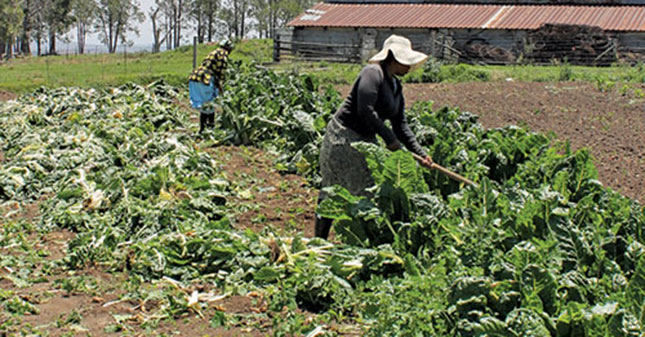
You were the chairperson of the local organising committee of the World Veterinary Poultry Association Congress that was recently held in Cape Town. What were the main poultry trends emerging from the congress?
First of all, there is a growing concern over the welfare of poultry, especially in First World countries. People project their own feelings onto chickens. They think of how they would feel if they were a chicken and kept in intensive production systems.
They don’t realise how irrational this comparison is nor do they acknowledge that most humans in any case find themselves cooped up in flats in cities – very much like layers in battery cages. Provided stocking density is within accepted norms, water, feed, fresh air and suitable lighting are available, these layers produce optimally and cost-effectively in these systems.
Antibiotic resistance is another concern. People fear the development of ‘superbugs’ due to resistance developing to certain antibiotics if they consume animal products such as eggs, meat, or milk from animals that have been treated with antibiotics.
However, where correct dosage and withdrawal periods are adhered to, this is not a big concern. It is more likely that human bacteria develop resistance because people have been using antibiotics incorrectly. There is also a growing concern over diseases such as avian influenza or bird flu, which have the potential to infect humans.
How does South Africa compare with the rest of the world concerning welfare standards?
The South African Poultry Association started working on a Code of Practice for the poultry industry in the early 1990s. These production guidelines include minimum standards for production space, drinkers and feeders. Although the National Society for the Prevention of Cruelty to Animals, which was involved in the development of these guidelines, was not entirely satisfied with all the suggestions, it was satisfied that the industry would at least have a set standard to guide production. Compliance was voluntary.
Today, the industry is reviewing this code that defines the minimum standards for the well-being of poultry in commercial operations, research and educational facilities. The code has the production of safe and wholesome food for human consumption as its highest priority, therefore fully supports the implementation of applicable measures to comply with the requirements for safe food of poultry origin.
Priority is also placed on adequate facilities and production resources to supply proper housing, quality feed and water and to attend to sick and injured chickens to ensure the well-being of the animals. In line with the code, financial costs should not be a reason for neglecting birds.
Many speakers at the congress referred to risks associated with free-range production. What are these issues?
One of the problems is that there is no generally accepted standard by which we can measure animal welfare. So while people think that birds are “better off’ being allowed to roam freely, there is no proof that these birds are in fact better off than those used for production in an intensive commercial system where they have sufficient shelter, food and clean water.
People also don’t realise that chickens, because they originate from jungle fowl, do not like being out in the open. If you open a door for them to roam outside, they tend to go outside for five minutes and then return. People also don’t realise that birds allowed to roam outside are more vulnerable to diseases and parasites than those kept in an intensive production system. Many severe poultry diseases spread because of birds coming in contact with other infected animals and wild birds. In other countries, this is especially a problem with migratory birds and highly pathogenic avian influenza.
If I had to choose between free-range eggs and eggs from an intensive production system, I would choose those from an intensive production system as they have been produced in the cleanest and more controlled environment. They are hardly touched during the production system, whereas those produced on free-range farms usually lie on the ground or in nest boxes and are often contaminated with droppings containing bacteria. To reduce these risks and increase production efficiency, the farmer has to employ more labour or invest in expensive “automatic nest box systems”.
Most consumers, however, aren’t willing to pay premiums to justify the higher costs associated with free-range production. The other problem with free-range production is that we have to produce more food for the growing world population. Resources such as water and land are limited. We won’t produce more poultry if we keep fewer birds per production unit.
What is the antibiotic situation in South Africa? Do we have many incidents of birds that have developed resistance to antibiotics? And how adequate is our regulation of antibiotic treatments?
There are numerous cases where bacteria affecting chickens have developed antibiotic resistance. Remember, though, that it is usually resistance to a specific active ingredient, not all antibiotics. As far as South Africa is concerned, we do have a problem that antibiotics are not regulated very well. Most can be bought over the counter without a prescription from a vet.
This originates from the days when many farms were isolated and did not have access to a veterinarian to medicate livestock.
With antibiotics being available so freely, there is a risk that producers might use it incorrectly by giving it to birds that do not require it or simply giving it too often. I foresee that the industry will become more regulated in the future, so that producers will require prescriptions from vets, as is the case with people, to buy antibiotics.
How has the rising concern over antibiotic resistance affected poultry production in general?
There is a drive in most countries to lessen the use of antibiotics. There has also been a shift from curative to preventative treatment, resulting in huge growth in vaccine sales and vaccine development – even for bacteria which were typically treated with antibiotics.
The vaccines work similarly to flu-shots for humans, and help to prevent birds from contracting specific diseases. The vaccines are becoming increasingly advanced: they no longer induce immunity against only one virus but are recombined to protect against more than one disease. The newer vaccines also pose lower risk than the older ones, and many ensure long-term protection so that the chicken is vaccinated only once or twice against a specific disease.
Vaccines can be administered at various stages of production – into embryonated eggs in the hatchery, to day-old chicks in the hatchery, or to chickens in rearing and production houses.
How big of a threat is avian influenza to South Africa?
We have had outbreaks of highly pathogenic avian influenza in ostriches, but fortunately nothing with chickens so far. People are concerned about the disease because of its potential to spread to people, as happened in China. So far, however, it seems that the greatest risks has been for people working in close proximity with these birds. Fewer people die of avian influenza each year than of seasonal human influenza or rabies.
There has been outbreaks in Europe and the US this year, resulting in millions of birds being culled. During these times, there has been a ban on poultry imports from these regions to protect our own industry against a potential threat. You have to do this. We don’t want this highly contagious disease in our country.
For more information, phone Dr Hannes Swart on 083 251 8479 or email him at [email protected].













